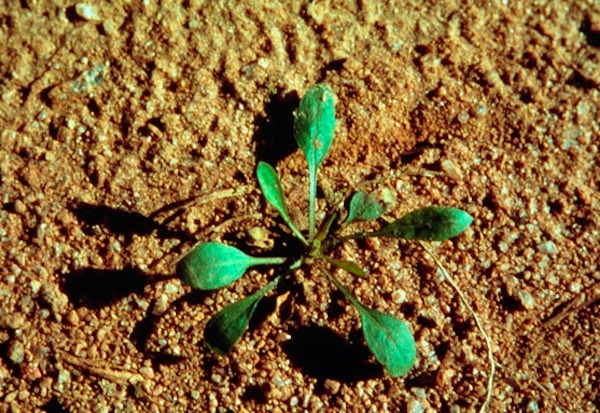July 11, 2018

Source: Ohio State University
A uniform wheat crop can provide effective suppression of marestail, especially when combined with some in-crop herbicides. It is nonetheless typical for marestail plants to be evident after the wheat is harvested, and these should be controlled prior to double crop soybean emergence. There can be a couple types of marestail plants to deal with in this situation: 1) small ones that were lurking near the base of the wheat plants, which are largely not disturbed by the combine; and 2) larger ones that may have been present in areas of thin wheat stand, which get cut off by the combine and then regrow. The first of these is really the more ideal situation because the small undisturbed plants can usually be controlled by one of the following: glyphosate plus Sharpen + MSO; glufosinate (Liberty, Interline, Cheetah, etc); or possibly even Gramoxone plus metribuzin (although this is more effective when mixed with 2,4-D). Adding metribuzin to any of these can improve control of emerged marestail and provide some residual control of later emerging marestail as well.
The second situation, where marestail plants regrow following damage by the combine, is more challenging. We have tried a number of treatments at multiple locations where marestail have been in this condition, and have not been able to obtain more than about 80% control. This level of control can prevent competition with the soybeans and minimize seed production. Best options for this situation, ranked from most to least effective:
Glufosinate + Sharpen + metribuzin + MSO
Glufosinate + Sharpen + MSO
Glyphosate + Sharpen + metribuzin + MSO
Glyphosate + Sharpen + MSO
A few other things to consider:
- Glyphosate treatments may be the better choice where large grasses are present, or where grasses other than giant foxtail are present.
- All of these treatments contain one or more contact herbicides (not systemic) and should be applied in at least 15 gpa with the appropriate nozzle and adjuvants to ensure thorough coverage.
- Planting LibertyLink soybeans provides more flexibility in when glufosinate can be applied, and also provides for the postemergence use of glufosinate. We do not advise waiting too long after soybean planting to apply the glufosinate though – the marestail won’t get any easier to control. In Roundup Ready or non-GMO soybeans, there will be no postemergence option that is effective on marestail.
- The preemergence burndown is responsible for much of the weed control in double crop soybeans, and we advise against trying to go too simple or inexpensive. Adding some residual herbicide is not necessarily a bad thing in double crop, but it is not near as important compared with full-season soybeans. And some residual soybean herbicides should not be applied this late in the season where corn will be planted next year due to carryover concerns. Any of the products containing chlorimuron, cloransulam, imazaquin, or imazethapyr should generally not be applied this late.
- Much of the information here also applies to control of marestail in wheat stubble, in the absence of soybeans. However, 2,4-D can be used in wheat stubble, and also dicamba if the temperatures are cool enough. Our research in wheat stubble has shown that applying before the end of July is more effective, and even glyphosate/2,4-D can prevent most of the seed production if applied by then. Preventing marestail seed production is the goal in wheat stubble. The marestail plants present in July following wheat harvest will not survive through the winter, and any chemical or nonchemical approach that prevents them from flowering and producing seed is adequate.
About the Author(s)
You May Also Like




